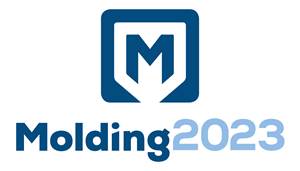Automate ... or Else
If your molding process isn’t automated, it’s likely not as efficient as it can be.
I remember the first time I went up to Bolton, Ont., to visit Husky, the injection machine builder and moldmaker. It was probably more than 25 years ago. Their marketing executive at the time took me on a tour of the multiple-building campus. He loved doing these tours. He proudly pointed out how pristine each and every corner of every building was. He didn’t have to emphasize that, because even back then, as an up-and-coming plastics reporter, I knew that making and assembling industrial machinery could get pretty messy, but there was nary a spot of grease on the floor on any of the multiple buildings I visited, and I visited them all.
I recall reaching an area on the ground floor of one building whose walls was adorned with plaques and framed images of advertising, marketing and editorial materials by or about Husky. One in particular caught my eye, and obviously left an impression. In my mind’s eye, even today I can see a two-page blow-up of an article that Robert Schad, Husky’s founder and then owner, had written for one of the many plastics industry publications at the time (I think it was Modern Plastics). I remember Schad’s black-and-white picture was part of that two-page blow-up. I’m fuzzy on some of the other details, but I vividly recall the headline of the article: “Automate or Die.” Wow, I thought to myself. Pretty dramatic stuff.
That article was written more than 30 years ago. Bob Schad was clearly a man of vision. (And still is: he ultimately sold Husky and went on to start another machine builder, Athena Automation, now known as Niigon Machines Ltd.) But over the years, I couldn’t help but wonder if U.S. molders were heeding his prescient words of warning. For a long time, my feeling was, “Not fast enough, certainly not at the pace of European molders.” But things now are changing, and fast.
Our parent company, Gardner Business Media, has a market-research division called Gardner Intelligence. I wrote about this division here in the June issue. Among other projects, Gardner Intelligence does an annual Capital Spending research project. Conducted in late summer, this survey asks our audience of custom and captive processors to indicate where they will be investing their capex funds in the coming year. Over a 10-yr period that began in 2008, capex investments in robots have almost doubled.
I saw this report recently, and figured the increase in spending was likely explained by the ongoing “workforce development” problems that plastics and most other manufacturers are confronting. But digging deeper into the most recent study, I found that was not the case. Some 20% of the survey respondents said they’d be investing in automation to improve productivity and efficiency; 19% to increase capacity; 16% to improve quality; and another 16% to update existing technology.
I bring all this up because molders today are confronted with more choices in robotics and automation, and in this issue we devoted 10 pages to helping you decide which among the three major types of robots are right for your operation. I invite you to take a look. The world of manufacturing is evolving rapidly, and if you haven’t taken the time to evaluate automation in your plant, best to do so. Now. Because in the time between when this article is sent to the printer and when it reaches your hands, industry will have changed some more. Automate or die? That’s maybe a bit scary. But the alternative is scarier. Automate or else.
Related Content
Bidding So Long — But Not Goodbye — To Plastics Icon Matt Naitove
After 51 years of contributing content, plastics industry stalwart will take a step back.
Read MoreAn Opportunity by Design
At the very moment that intensifying public pressure pushes the plastics industry to address waste in the environment, the sector is stepping up to reclaim the valuable materials it’s created.
Read MoreNot Your Grandpa’s Plastics Processing Operation
New materials and machinery offer processors the means to run their ´óĎó´«Ă˝es more efficiently and more inline with the circular economy. But you have to say yes.
Read MoreAttention Molders: Time to Get Serious About Sustainability
If you’re not looking at ways to make your injection molding operation more sustainable, perhaps you’d better get started.
Read MoreRead Next
See Recyclers Close the Loop on Trade Show Production Scrap at NPE2024
A collaboration between show organizer PLASTICS, recycler CPR and size reduction experts WEIMA and Conair recovered and recycled all production scrap at NPE2024.
Read MoreMaking the Circular Economy a Reality
Driven by brand owner demands and new worldwide legislation, the entire supply chain is working toward the shift to circularity, with some evidence the circular economy has already begun.
Read MoreLead the Conversation, Change the Conversation
Coverage of single-use plastics can be both misleading and demoralizing. Here are 10 tips for changing the perception of the plastics industry at your company and in your community.
Read More













